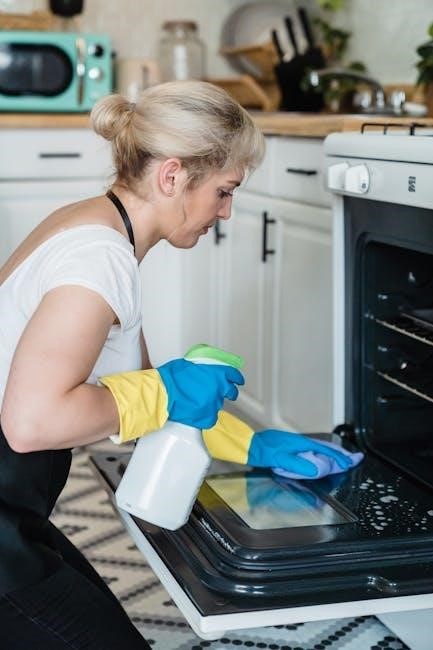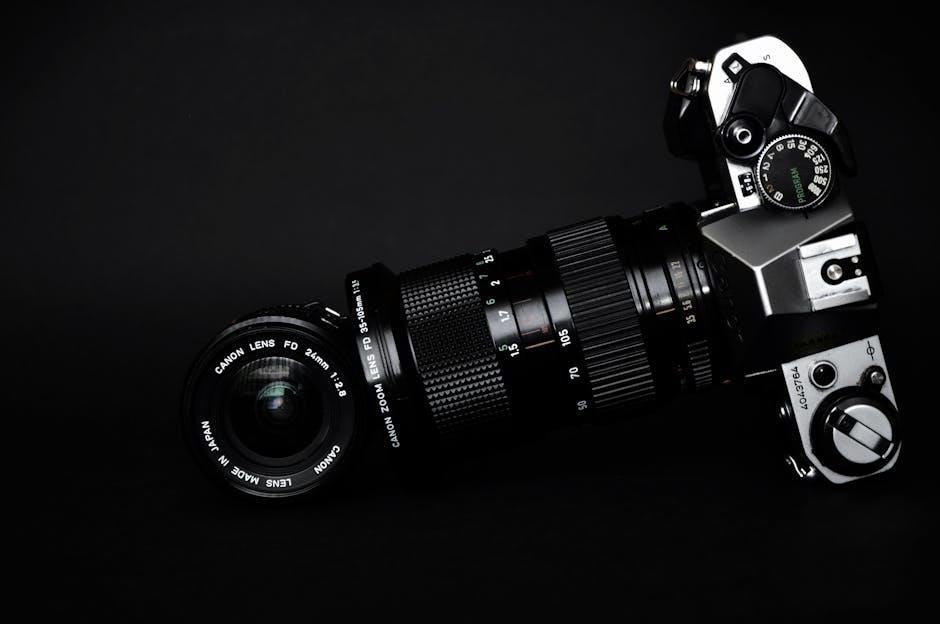Viking Professional Oven Manual: A Comprehensive Guide
Welcome to the ultimate resource for mastering your Viking Professional oven! This guide compiles crucial information from various manuals, offering insights into operation, maintenance, and troubleshooting. Whether you’re a seasoned chef or a home cook, this comprehensive resource will help you unlock your oven’s full potential.
Viking ovens are renowned for their exceptional performance, durability, and innovative design, elevating the culinary experience for both professional chefs and passionate home cooks. As a leading manufacturer of high-quality kitchen appliances, Viking has established itself as a brand synonymous with the epicurean lifestyle. With Viking, there is no other option!
These ovens boast professional-style features and are meticulously crafted to meet the demands of serious cooking enthusiasts. From built-in single and double ovens to freestanding dual fuel self-cleaning ranges, Viking offers a diverse range of models to suit various kitchen layouts and cooking preferences. Each oven is designed with precision and attention to detail, ensuring consistent and reliable results every time.
This manual serves as your gateway to understanding the unique features and capabilities of your Viking Professional oven. Whether you’re exploring baking modes, convection cooking, or self-cleaning cycles, this guide provides the information you need to confidently operate and maintain your appliance. Unlock the full potential of your Viking oven and embark on a culinary journey filled with delicious creations.
Finding Your Specific Model’s Manual
Locating the correct manual for your Viking Professional oven is crucial for understanding its specific features and operation. Viking offers a wide range of oven models, each with its unique set of controls and functionalities. To ensure you have the right information at your fingertips, follow these steps to find your model’s manual.

First, identify the model number of your oven. This is typically found on a label located on the oven’s frame, either inside the oven door or on the back panel. Once you have the model number, visit the Viking Range website. Navigate to the “Specifications and Documentation” section, where you can browse through a comprehensive library of manuals and other resources.
Alternatively, you can use online search engines like Google or DuckDuckGo to search for your specific model number followed by “user manual” or “owner’s manual.” This will often lead you to PDF versions of the manual that you can download and save for future reference. Many online databases also host Viking oven manuals for free viewing or download.
Having your specific model’s manual will empower you to properly use and maintain your Viking Professional oven, ensuring years of reliable performance.
Understanding Oven Controls and Settings
Navigating the controls and settings of your Viking Professional oven is essential for achieving optimal cooking results. Viking ovens often feature a combination of knobs, buttons, and digital displays, each controlling various aspects of the oven’s operation.
Familiarize yourself with the primary controls, including the oven function selector. This knob or button allows you to choose different cooking modes like bake, convection bake, broil, and self-clean. Understanding the function of each mode is crucial for selecting the appropriate setting for your desired dish.
Pay close attention to the temperature control. Accurate temperature settings are vital for even cooking and preventing burning. Viking ovens often have precise temperature controls, allowing you to adjust the heat in small increments.
Some models may include additional features such as timers, preheating indicators, and probe settings. Consult your specific model’s manual for detailed explanations of these features.
Experiment with different settings to understand how they affect your cooking. Keep a log of your findings to create a personalized guide to your oven’s unique characteristics. With practice and understanding, you’ll be able to master your Viking Professional oven and achieve culinary perfection.
Baking Modes and Their Uses
Viking Professional ovens offer a variety of baking modes, each designed to optimize cooking for different types of dishes. Understanding these modes is crucial for achieving the best possible results in your baking endeavors.
The standard “Bake” mode utilizes radiant heat from the elements at the top and bottom of the oven. This mode is ideal for general baking, such as cakes, cookies, and casseroles, ensuring even cooking throughout.
Convection Bake is another popular option, employing a fan to circulate hot air around the oven cavity. This promotes faster and more even cooking, reducing hot spots and ensuring consistent browning. It’s particularly well-suited for baking multiple trays of cookies or pastries simultaneously.
Some Viking models feature a “TruConvect” mode, which optimizes the convection system for superior results. This mode often includes a dedicated heating element around the convection fan, providing even more consistent heat distribution.
Explore the different baking modes in your Viking oven to discover the best settings for your favorite recipes. Consult your oven’s manual for detailed explanations of each mode and recommended uses.
Convection Cooking Explained
Convection cooking is a key feature in many Viking Professional ovens, offering several advantages over traditional baking methods. It utilizes a fan to circulate hot air throughout the oven cavity, ensuring consistent temperatures and even cooking.
The primary benefit of convection cooking is its ability to reduce hot spots, leading to more uniform browning and baking. The circulating air helps to distribute heat evenly around the food, preventing some areas from overcooking while others remain undercooked.
Furthermore, convection cooking can significantly reduce cooking times. The constant movement of hot air transfers heat more efficiently, allowing food to cook up to 25% faster than in a conventional oven.
When using convection, it’s important to adjust your recipes accordingly. Reduce the oven temperature by 25°F and check the food for doneness a few minutes earlier than the recipe suggests. Convection is ideal for roasting meats, baking multiple trays of cookies, and achieving perfectly crisp pastries.
Refer to your Viking oven manual for specific instructions and recommendations on using the convection feature.
Broiling Techniques for Perfect Results
Broiling in your Viking Professional oven is a fast and efficient way to achieve beautifully browned and slightly charred surfaces on your favorite foods. Unlike baking, which uses indirect heat, broiling utilizes intense, direct heat from an overhead element.
For optimal broiling, position the oven rack according to the thickness of the food. Thicker cuts of meat should be placed further from the broiler to prevent burning, while thinner items can be closer. Always preheat the broiler for several minutes to ensure the element is at its maximum temperature.
When broiling, it’s essential to monitor the food closely to prevent burning. The high heat can quickly turn food from perfectly browned to charred if left unattended.

Use a broiler pan to catch any drippings and prevent flare-ups. Lining the broiler pan with foil can also make cleanup easier. For best results, consider using convection broiling, if available on your Viking oven model. This circulates hot air, promoting even browning and faster cooking.
Refer to your specific Viking oven manual for precise broiling recommendations and safety precautions.
Self-Cleaning Cycle: Operation and Precautions
Your Viking Professional oven is equipped with a self-cleaning cycle, designed to simplify the process of removing baked-on food and residue. This cycle uses high temperatures to incinerate any remaining soil, leaving behind only a small amount of ash that can be easily wiped away.
Before initiating the self-cleaning cycle, it’s crucial to remove all oven racks, broiler pans, and any other utensils from the oven cavity. Wipe up any large spills or excessive food debris to minimize smoke and odors during the cleaning process.
Ensure the oven door is fully closed and latched before starting the cycle. The door will automatically lock for safety reasons and will remain locked until the oven has cooled down sufficiently after the cycle is complete.
During the self-cleaning cycle, the oven will generate significant heat and may produce some smoke and odors. Ensure the kitchen is well-ventilated by opening windows or turning on the exhaust fan.
Never interrupt the self-cleaning cycle once it has begun. Allow the oven to complete the entire cycle and cool down completely before opening the door. Refer to your Viking oven manual for specific instructions and safety guidelines related to the self-cleaning feature.
Troubleshooting Common Oven Problems
Even with the robust design of Viking Professional ovens, occasional issues may arise. This section provides guidance on troubleshooting common problems, potentially saving you a service call.
Oven Not Heating: First, ensure the oven is properly connected to a power source and the circuit breaker hasn’t tripped. Check if the bake or broil element is visibly damaged. If the oven uses a gas supply, confirm the gas valve is open.
Uneven Baking: This can result from improper rack placement or an uncalibrated oven thermostat. Ensure racks are positioned correctly and consider calibrating the oven following the manual’s instructions.
Excessive Smoke During Cooking: This often indicates food debris buildup. Clean the oven interior thoroughly, paying attention to the oven floor. Avoid using excessive oil or fat when cooking.
Oven Light Not Working: Replace the bulb with a suitable replacement. If the new bulb doesn’t illuminate, a wiring issue may exist, requiring professional attention.
Error Codes: Consult your oven’s manual for a list of error codes and their corresponding solutions. Note the error code and contact Viking customer support for assistance.
Maintenance Tips for Longevity
Proper maintenance is crucial for extending the lifespan of your Viking Professional oven and ensuring optimal performance. Regular cleaning and preventative measures can prevent costly repairs and keep your oven working like new.
Regular Cleaning: Clean the oven interior after each use to prevent buildup of food debris and grease. Wipe down the exterior surfaces with a damp cloth and mild detergent. Clean spills immediately to prevent staining.
Check Oven Seals: Inspect the oven door seals regularly for damage or wear. Replace worn seals to maintain proper heat retention and energy efficiency.
Calibrate the Oven: Periodically check the oven’s temperature accuracy and calibrate as needed. This ensures consistent baking results and prevents over or undercooking.
Inspect Heating Elements: Examine the bake and broil elements for any signs of damage or corrosion. If you notice any issues, contact a qualified technician for repair or replacement.
Professional Servicing: Schedule regular professional servicing to ensure all components are functioning correctly. A qualified technician can identify and address potential problems before they escalate.
Safety Precautions When Using the Oven
Operating a Viking Professional oven requires adherence to safety precautions to prevent accidents and injuries. Understanding and following these guidelines ensures a safe cooking environment.
Read the Manual: Familiarize yourself with the oven’s operating instructions and safety warnings before use.
Supervise Children: Never leave children unattended near the oven, especially when it’s in use.
Use Oven Mitts: Always use oven mitts or heat-resistant gloves when handling hot dishes or touching oven surfaces.
Avoid Water on Hot Surfaces: Never pour water onto hot oven surfaces, as this can cause steam burns and damage the oven.
Proper Ventilation: Ensure adequate ventilation when using the oven to prevent the buildup of fumes or odors.
Flammable Materials: Keep flammable materials away from the oven, including curtains, paper products, and cleaning supplies.
Self-Cleaning Cycle: Follow the manufacturer’s instructions when using the self-cleaning cycle, and ensure the area is well-ventilated.
Electrical Safety: Do not use the oven if the power cord is damaged. Contact a qualified technician for repairs.
Cleaning Procedures for Different Oven Components
Maintaining a clean Viking Professional oven ensures optimal performance and longevity. Different components require specific cleaning procedures to avoid damage and ensure effective cleaning.

Oven Interior: For general cleaning, wipe the interior with a damp cloth and mild detergent. For baked-on spills, use an oven cleaner specifically designed for self-cleaning ovens, following the product instructions carefully.
Oven Racks: Remove oven racks and wash them in warm, soapy water. For stubborn stains, soak the racks in a solution of baking soda and water before scrubbing.
Oven Door: Clean the oven door with a glass cleaner or a mixture of vinegar and water. Avoid using abrasive cleaners that can scratch the glass.
Control Panel: Wipe the control panel with a soft, damp cloth. Avoid using excessive water or harsh cleaners that can damage the electronic components.
Exterior Surfaces: Clean the exterior surfaces of the oven with a stainless steel cleaner or a mild detergent. Wipe dry with a soft cloth to prevent water spots.
Heating Elements: Do not attempt to clean the heating elements directly. They will burn off any residue during normal use or the self-cleaning cycle.
Warranty Information and Support Resources
Understanding your Viking Professional oven’s warranty is crucial for protecting your investment. Viking Range Corporation typically offers a one-year full warranty on their built-in electric ovens, covering component parts and accessories against defects in materials and workmanship.
For detailed warranty information specific to your model, consult the use and care manual included with your oven or visit the Viking website. The website provides access to warranty details, product specifications, and downloadable manuals.
If you encounter issues with your oven, Viking offers several support resources. Their customer service hotline, 1-888-VIKING1 (845-4641), provides assistance with troubleshooting, service requests, and general inquiries. The Viking website also features a comprehensive FAQ section and a searchable knowledge base.
Additionally, Viking maintains a network of authorized service providers who can perform repairs and maintenance on your oven. Contact Viking customer service to locate a qualified technician in your area.
Remember to register your oven online to ensure prompt warranty service and receive important product updates.
Locating Replacement Parts

When maintaining your Viking Professional oven, you might eventually need to replace worn or damaged parts. Finding the correct replacement parts is essential for ensuring your oven continues to operate safely and efficiently.
The best place to start your search is the official Viking Range website. Their website features a parts store where you can search for parts specific to your oven model. You’ll likely need your model number to ensure compatibility.
Alternatively, you can contact Viking’s customer service hotline. Their representatives can help you identify the correct part number and provide information on where to purchase the replacement.
Many online retailers specialize in appliance parts and may carry Viking replacement parts. Be sure to verify the part number and compatibility before making a purchase.
Local appliance repair shops may also stock common replacement parts or be able to order them for you. This can be a convenient option if you need the part quickly.
When ordering replacement parts, always use genuine Viking parts to ensure optimal performance and safety. Using aftermarket parts may void your warranty.
